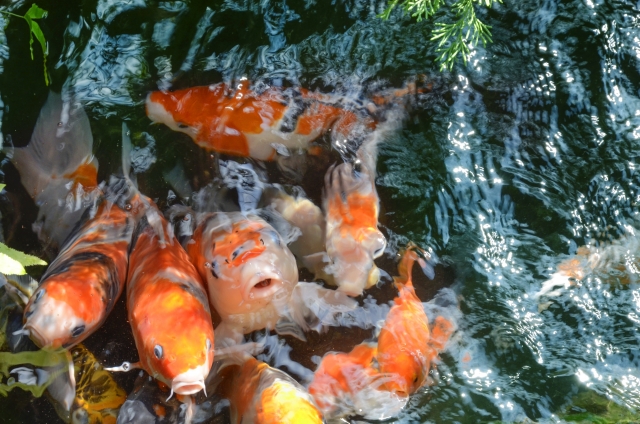Today, I’d like to write about an analysis of ‘The Pillow Book’ which is the source of inspiration of Japanography. Sharing ‘enchanting’ everyday cooking photos together. ‘The Pillow Book’ is the origin of essay compilations written about 1,000 years ago, one of the most prominent classical literature Japan treasures and it is worldly renowned masterpiece. Yet, it has been inevitably and ceaselessly facing with the fate of mistranslations when crossing over the ocean.
ジャパノグラフィーの着想の元にしている『枕草子』について、今回は分析を加えつつ書いてみたいと思います。しかしそこは楽しく、毎日作っているご飯の写真を交えつつ、私にとっての「をかし」な場面と御一緒に。『枕草子』は随筆の初穂として凡そ千年に前に書かれた、日本では最も有名な古典の一つであり、世界中にもその名は知れ渡っていますが、文学作品が海を越えて翻訳されて行く際のもう一つの宿命でもあった、誤訳という運命にも晒されて来ました。

It was once categorized as pornography associated with the title of pillow. Or some introduced pillow came from a wooden pillow with a drawer keeping notes or a diary. Arthur Waley (1889-1966), English scholar of the Oriental Studies accomplished significant achievement having abridged translation of ‘The Tale of Genji’ and ‘The Pillow Book’, introducing Japanese classical literature to the world. However, there’s a fatal mistake. The book cover states Lady Sei Shonagon as a courtesan.
枕から連想される猥雑本の類のものであるという発想があったり、『枕草子』は文や日記をしまう引き出し付きの高枕から由来している、という紹介のされ方をしていたりします。イギリス人の東洋学者であったアーサー・ウェイリー (1889-1966) は、『源氏物語』および『枕草子』の抄訳をして、世界に日本の古典を紹介するという偉業を成し遂げましたが、その本の表紙には致命的な間違いがあり、筆者の清少納言は高級遊女だと記されてしまっています。
*When Lady Sei Shongaon was presented precious paper from Empress Teishi, Lady Sei suggested using it for a pillow (having a poetic epithet) with a sense of humor, origin of the title of ‘The Pillow Book’. /『枕草子』の由来は当時高級品だった紙を中宮定子より賜ったときに、「枕にかせむ」と枕と枕詞を掛けた清少納言の才智が『枕草子』の由来

Lady Sei Shonagon was a court lady, a few of chosen elite bureaucrat hired to educate Empress Teishi who was loved most tenderly by the Emperor. Lady Sei’s duty was not high class prostitute nor concubine who served nights accompanying with Emperor. Lady Sei attended Cultural Salon that Empress Teishi hosted, and Lady Sei carried out a mission of recording the sparkling and twinkling moments dedicating herself with the gift of writing.
清少納言は女房、つまり宮中で帝の寵愛を受ける中宮定子に教育を授ける選ばれし人材であり、今で言うところの高級官僚で、遊女あるいは側女として帝の元に侍り夜を共に過ごすという役割を担ってはいなかった。清少納言は、時の皇后であった中宮定子様の元で花開いた文化サロンに居合わせ、その機知と文才をもって、在りし日の眩い光り輝く煌めきを書き残すという仕事を成し遂げたのです。

However, Lady Sei actually took up writing ‘The Pillow Book’ after Empress Teishi started to lose the position along with family downfall. If Lady Sei hadn’t left records of the time spent with Empress Teishi, the miraculously glowing days would have been lost eternally as time went by, vainly turning into water bubbles.
しかし、実際に清少納言が『枕草子』の執筆を始めたのは、中宮定子が後ろ盾を失い没落が始まってからであったとされています。自分が書き残して行かなければ、定子様と過ごした奇跡の様に愛おしく麗しかった日々は、時の流れとともに水泡となり消えて行く。

Lady Sei desired to protect Empress, and by using her giftedness she sublimated the love for Empress into the first crop of Essay Literature. In order to carve in people’s memory, she poured out all her intelligence, aesthetics, and sense of humor to record episodes of Cultural Salon. For the very opportunity, she adopted the attitude of ‘enchanting’.
この身を捧げてでもお守りしたい定子様のことを、清少納言は己の筆の力を使って書くことにより、随筆文学の初穂へと昇華させた。その在りし日の文化サロンの様子を、人々の記憶に留めて行く為に、持てる才智、美意識、ユーモア、その全てを注いだのです。そしてその時に選び取った心の態度が「をかし」であった。

It’s no doubt that Lady Sei was blessed with high spirit and unshakable determination. Not only that, she contemplated the meaning of life and the overwhelming honor to serve for Empress, then she made an unyielding resolution after witnessing the decline of Empress Teishi. Who else could write if not by her own? And Lady Sei completed writing ‘The Pillow Book’ by spotting enchanting light, never allowing herself to tuck in tears, sorrow, nor self-pity.
勿論、持ち前の困難に挫けない毅然さと明るい心根はあったことでしょう。しかし、自分の生まれて来た意味、定子様にお仕えすることにあずかれた僥倖と、その後の定子様の没落を歴史の証人として目撃したあと、清少納言は肚を据えた。自分が書かなくては誰が書けようか、と。そして、そこに涙や嘆きや自己憐憫という要素を一切挟み込まず、輝く光のみを当てて『枕草子』を書ききったのです。

In ‘The Pillow Book’ chapter 280, bright and brilliant Empress Teishi asked Lady Sei with a riddle based on Chinese Classical Literature, Lady Sei got the answer straightaway and responded with stunning esprit. How rejoicing and enticing to spend such exquisite intellectual moments with Empress Teishi. And Lady Sei not only embracing them as her own precious jewels, yet by writing she had conviction to carve in people’s mind as historical episodes.
『枕草子』第二八〇段で、いと聡明なる定子様が香炉峰の雪を謎かけをして(白楽天の「香炉峰の雪は簾を掲げて看る」という中国の古典に基づき)問いかけ、その場で簾を上げて見事に応えた清少納言自身のやりとりは、どんなに心楽しく誇らしいものであったでしょう。その匂い立つほどに知的で優雅なひとときは、清少納言の心の宝物としてだけではなく、書き残すことで、歴史を彩る一つの名場面として人々の記憶に刻むことにするのだという確信があった。

You can never exceed yourself no matter how further nor how diligently you dig in. Even one has luminous amazing talent, it will sure to end as an abortive flower if just reflecting upon oneself. Each one of us can excel ourself to demonstrate outstanding performance, focusing on not yourself but for someone else, or putting yourself in a broader context.
自分というものはどこまで掘り下げて行っても、所詮自分を超えることは出来ない。どんなに眩く燦然と輝く才能を持っていたとしても、それが自己のみを見つめたものに終始した時、ただの虚しい徒花になる。自分以外の誰かの為、あるいはもっと広い文脈に自己を置いた時、人は本来持てる力以上のものを発揮することが出来るのでしょう。
Bring light to the work of Lady Sei Shonagon, there’s hidden encouragement and wisdom that we are able to create a gem of beauty that stands out with undying luminous shine, by accepting intolerable destiny and exceeding over with.
清少納言が果たし抜いた仕事を鑑みるとき、そこには後世を生きる私たちにとって、抗えない運命を受入れ、またそれを超えて、いつまでも色褪せない光を放ち続ける勾玉の様なものを創り上げることが出来るのだという、大きな励ましと叡智が隠れているのです。
Love and Peace.
*参考文献
‘The Pillow Book of Sei Shonagon THE DIARY OF A COURTESAN IN TENTH CENTURY JAPAN’ translated by Arthur Waley, with a foreword by Dennis Washburn, TUTLE Publishing, 2011
『日本の古典をよむ⑧ 枕草子』松尾聰・永井和子、小学館、2007年






















